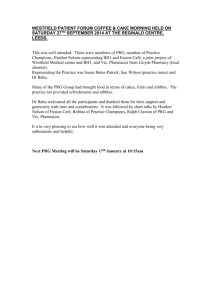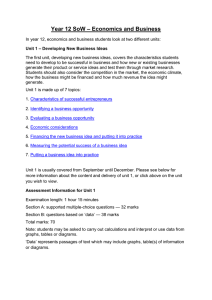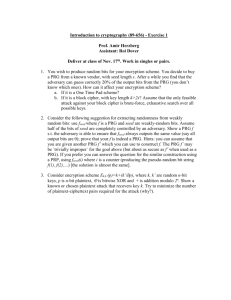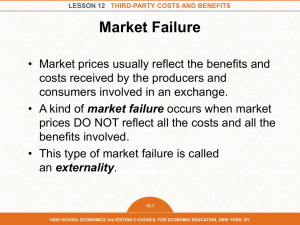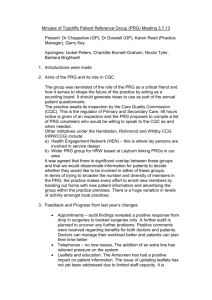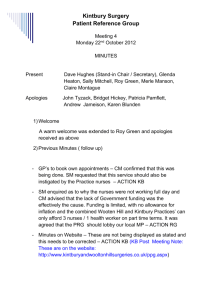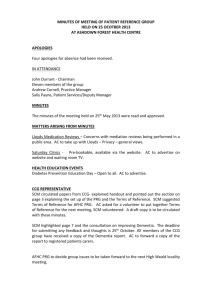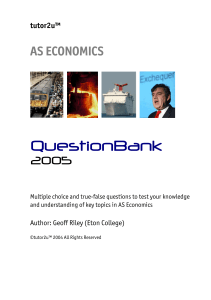Unit 3: International Business
advertisement
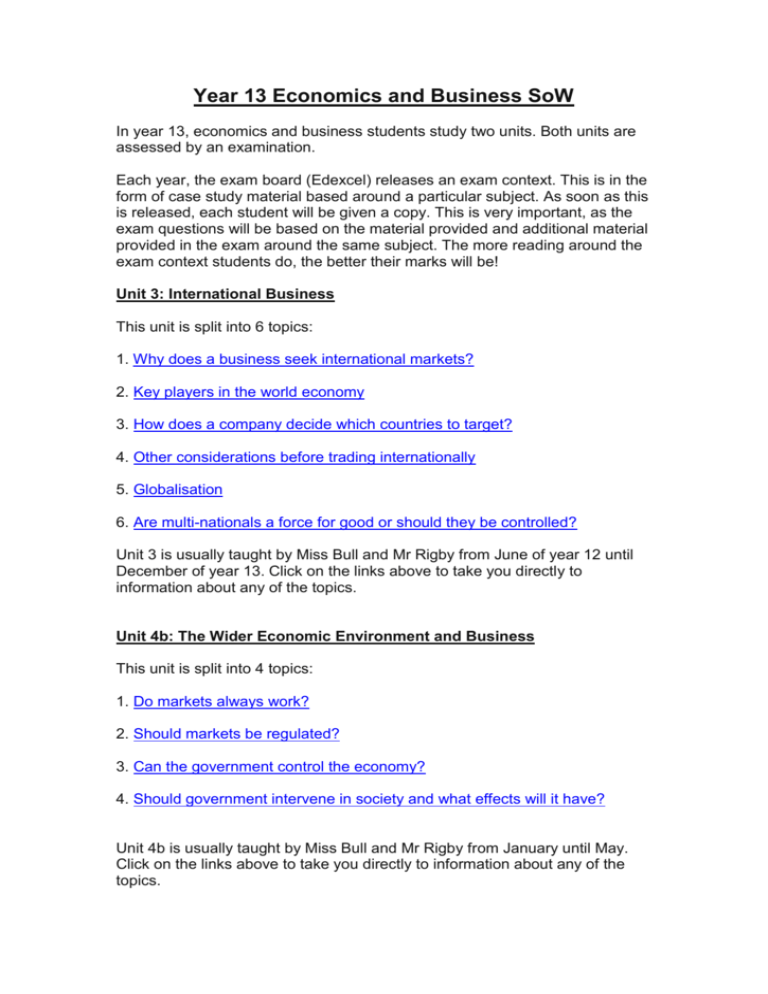
Year 13 Economics and Business SoW In year 13, economics and business students study two units. Both units are assessed by an examination. Each year, the exam board (Edexcel) releases an exam context. This is in the form of case study material based around a particular subject. As soon as this is released, each student will be given a copy. This is very important, as the exam questions will be based on the material provided and additional material provided in the exam around the same subject. The more reading around the exam context students do, the better their marks will be! Unit 3: International Business This unit is split into 6 topics: 1. Why does a business seek international markets? 2. Key players in the world economy 3. How does a company decide which countries to target? 4. Other considerations before trading internationally 5. Globalisation 6. Are multi-nationals a force for good or should they be controlled? Unit 3 is usually taught by Miss Bull and Mr Rigby from June of year 12 until December of year 13. Click on the links above to take you directly to information about any of the topics. Unit 4b: The Wider Economic Environment and Business This unit is split into 4 topics: 1. Do markets always work? 2. Should markets be regulated? 3. Can the government control the economy? 4. Should government intervene in society and what effects will it have? Unit 4b is usually taught by Miss Bull and Mr Rigby from January until May. Click on the links above to take you directly to information about any of the topics. Unit 3 – International Business Topic 1 - Why does a business seek international markets? Week ZBu June/July Subject area Activity Resources Product or market conditions that may prompt a business to trade internationally Look at examples of companies that have extended the product life cycle through selling in new (country) markets or through selling product innovations in multiple (country) markets, or that have sought new (country) markets due to domestic competition. Activity sheet 1 — identifying household items that have been bought abroad, investigating the rise of mobile telecommunication industries in developing countries, the international expansion of Tesco and the global launch of Coca Cola Zero in 2007. Examine the implications of global sourcing and improvements in transportation and communication links with countries. Students need to know why there is increasing international trade, i.e. due to increasing trade liberalisation through reduction of international trade barriers by WTO, ability to trade within a trading bloc, e.g. European Union and the benefits of trading within the European Union. Wall N — Going Global, Business Review Volume 5, Issue 4, April 1999, pages 4-6 Topic 2 - Key players in the world economy Week PRg June September Subject area Activity Resources The likely impact of the growing economic power of China and India on individuals, national or multi-national firms in the 21st century? Students should consider what makes India and China economically powerful (e.g. population size, economic growth and export rates) how they impact on individuals or firms with their manufacturing exports (China) and call centres (India) and how a national firm may seek to trade with these countries (e.g. articles and case studies on Cobra beer). Activity sheet 2 — developing an understanding of the factors influencing the rise of China/India. See also the case study on BT’s outsourcing. Additional reading: 1. Burnett E — Opportunities in China, Business Review Volume 9, Issue 3, April 2003, pages 13-14 2. Lawley F — Cobra Beer, Business Review Volume 12, Issue 1, September 2005, pages 6-7 3. Marcouse I – China Crisis?, Business Review Volume 12, Issue 1, September 2005, pages 28-29 4. Whitlock, J – US Protectionism and China, Economic Review, Volume 24, Number 1, September 2006, pages 2-5 Topic 3 - How does a company decide which countries to target? Week Subject area Activity Resources PRg Assessment of country markets Assessment of potential country markets is based on corporate policy (which countries the company wants to target) and market attractiveness. Activity sheet 3 — a list of factors that companies may wish to consider when entering a new market, followed by application of these factors to a number of scenarios. Using one country market (e.g. a European country, USA, India, China, Singapore, Taiwan or South Korea) and a company’s product or service, identify if the country market would be attractive to the company. Additional reading: Jewell B — Entering Markets Overseas, Business Review Volume 1, Issue 2, November 1994, pages 17-20 Identify the advantages for a company of trading with a country which can produce goods or services more cheaply through specialisation. For example, the advantages and disadvantages for companies of using call centres in India could be examined. Activity sheet 4 — survival game to demonstrate comparative advantage. October PRg November Comparative advantage and the role of specialisation by countries Numerical approach to proving the role of comparative advantage and specialisation in boosting world trade. Investigation into the specialisms of various countries. Topic 4 - Other considerations before trading internationally Week commencing Subject area Activity Resources Responsibility to stakeholders Ethical decisions as to what and where to manufacture, balance between capital and labour, where to sell, pay and working conditions, environmental factors e.g. emissions, waste disposal. These sites provide useful resources on ethical trading: ZBu September/ October Students should consider the potential conflicts of socially responsible and ethical behaviour with profit-based and other objectives. www.anitaroddick.com http://www.anitaroddick.com/links.php?P HPSESSID=d97fd0064550848bdc8cac6 e311ec92b http://www.eti-ten.org/index.html http://www.traidcraft.co.uk/ Activity sheet 5 — identifying stakeholders and their objectives. Investigating the Corporate Social Responsibility (CSR) work of Tesco, Amway, Costa Coffee, Kellogg’s and BP. Identifying the advantages and disadvantages of adopting a CSR policy. Additional reading: Gillespie A — Corporate Social Responsibility: Is it Worth It? Business Review Volume 12, Issue 4, April 2006. pages 24-25 Zhang L — The Power of Stakeholders, Business Review Volume 5, Issue 2, November 1998, pages 9-11 ZBu September/ October Social/cultural differences in doing business There are numerous examples of companies trying to use the same promotional message for each country in which they trade and finding that, when translated, the message is different to what was intended. Students should consider when companies need to use a different promotional message for every country. Students should consider the role of international branding in communications. It is important to emphasise that a business person needs to know of any social/cultural differences in order to do business in a certain country. Some companies prefer to use agents http://news.bbc.co.uk/1/hi/business/7727 3.stm provides a summary of Mars re-branding Marathon as Snickers and Opal Fruits as Starburst. Activity sheet 6 — watching HSBC adverts. Reading a global branding article containing examples of companies trying to reach local markets with their global brands. as they have local knowledge and appropriate language skills. Students should consider the appropriateness of different distribution channels and pricing strategies for different countries. ZBu October The purpose of tariffs, laws, and import quotas. Only a brief overview is required of why tariffs, laws or import quotas are used, e.g. to protect domestic industries or balance of trade. Students should consider the constraints on businesses that these barriers present. Activity sheet 7 — analysis and discussion centred around a newspaper article on the 2007 US imposition of tariffs on Chinese paper. Topic 5 - Globalisation Week Subject area Activity Resources ZBu Global industries Students could cover all the three subject areas through examining one company such as Microsoft, Disney, Mercedes, Gucci. A company in an operating global industry such as banking, clothing, tourism or computers, requires a worldwide strategy. Students should consider the role of takeovers/ mergers in strengthening company position, advantages to a multinational company of global technology, R&D, sourcing, and the ability to balance resource investments in different countries. Activity Sheet 8 provides a basis from which to investigate various global companies, by allowing students to consider the theory behind the internationalisation of companies, and the success of international merger and acquisition activity. October ZBu Global marketing November ZBu November Global market niches Those carrying out global marketing may concentrate on product markets, where there is emphasis on the similarities of customers’ aspirations or tastes and access to media for each country. The promotional message may be the same leading to reduced average marketing costs. Sales incentives used may vary due to differences in local market segments. Disney will concentrate on selling their films in countries where there is an existing film distribution, and similar media, infrastructure. They may be able to use the same promotional message for their film in each country reducing the average cost of marketing. For some products, sales incentives may be necessary due to the use of different distribution channels, e.g. agents or distributors. Students should know that some companies may identify a target market across countries which is much larger than a single domestic market e.g. for luxury goods. International trends or sub-cultures may exist for some products or services, because they meet shared values and perceptions. For example, the Mercedes brand is respected worldwide, due to the innovative design and quality of their cars. Additional reading: Gillespie A — Johnson and Johnson, Business Review Volume 9, Issue 2, November 2002, pages 10-12 Redding S – Globalisation, Economic Review Volume 17 Number 1, September 1999, pages 16-19 Johal S - Globalisation & the WTO, Economic Review Volume21 Number 4, April 2004, pages10-12 Activity sheet 8 Additional reading: Jewell B — Entering Markets Overseas, Business Review Volume 1, Issue 2, November 1994, pages 17-20- Activity sheet 9 - Task 1b investigating the acquisition of luxury/ethical / fair-trade food and drink companies by large multinational corporations. Topic 6 - Are multi-nationals a force for good or should they be controlled? Week Subject area Activity Resources ZBu Benefits that multinationals bring to overseas countries Students should consider examples of the contributions different multinational companies have made to local economies, such as the Body Shop and Starbucks who pay premium prices for produce. Activity sheet 9 — investigations into Green and Blacks’ fair-trade organic chocolate, and the Body Shop’s Community Trade and Protect our Planet programmes. Potential negative impact of multinationals on overseas countries Students should consider the potential negative impact of multinationals on foreign governments in gaining concessions. Exploitation of labour in developing countries, implementation of working practices which would be unacceptable in their home country, sale of unsafe products to consumers, use of unsustainable resources, and degradation of the local environment. Activity sheet 9 - Task 2 Investigations into the consequences of the overseas activities of Union Carbide, Shell, Coca Cola, Nestle and Nike. Students should identify ways of controlling multi-national firms e.g. political, legal or economic constraints, competition policy, pressure groups. Activity sheet 9 December ZBu December ZBu December Can multinational firms be controlled? http://www.tutor2u.net/business/e xternal/globalisation_multinational s.htm provides some excellent background theory and information Unit 4b: The Wider Economic Environment and Business Topic 1: Do markets always work? Week Subject area Activity Resources February What market failure means Students need to know what market failure means-less than optimum allocation of resources, public and merit/demerit goods. Activity sheet 1 PRg They should understand why there is a perceived need for equity and equality. Students need to look at market failure in terms of what isn’t provided/or for which there is insufficient provision, e.g. defence lighthouses (public goods) and health/education (merit goods). They also need to look at what is provided that we don’t need, e.g. drugs/pollution. February PRg What externalities are and how they affect an economy Students need to look at some practical examples of social costs and benefits, environmental and social externalities and the difficulties in measuring them, the impact of externalities on the business and the economy in the short versus long run. Additional resources: Ingham A, Rail Privatisation Revisited, Economic Review, Volume 20, Number 3, February 2003, pages 17-20 Interactive quiz on merit and public goods found at: http://www.tutor2u.net/quiz/economics/j bc_econ_meritgoods_1.htm Diagrammatic analysis of merit and demerit goods found at: www.tutor2u.net/economics/content/topi cs/marketfail/merit_goods.htm Further notes/information on income inequality found at: http://www.tutor2u.net/blog/files/Revisio n_Income_Inequality.pdf Activity sheet 2 Additional resources: Presentations on positive and negative externalities found at: www.tutor2u.net/economics/presentatio ns/aseconomics/marketfailure/Negative Externalities/default.html www.tutor2u.net/economics/presentatio ns/aseconomics/marketfailure/PositiveE xternalities/default.html Worksheet on positive externalities of inoculations found at: www.bized.co.uk/learn/economics/mark etfail/characteristics/externalities/positiv e.htm Worksheet on identifying private and external benefits found at: www.bized.co.uk/learn/economics/mark etfail/characteristics/externalities/social. htm Article on costs of pollution found at: news.bbc.co.uk/1/hi/sci/tech/4444191.st m Further information on impact for businesses at: www.environmentagency.gov.uk/business February PRg February PRg To what extent are externalities acceptable? How much of an externality should we accept? What the Government can do about it? Case studies (UK or overseas) can be used to illustrate the control of externalities by legislation, regulation, taxation or tradable permits. Activity sheet 3 Can we use decision-making tools such as cost benefit analysis to help with this decision? Are these tools effective? Activity sheet 4 Useful websites include: www.greenpeace.org.uk www.transport2000.org.uk The effectiveness of these various policies should be considered. Websites from pressure groups, such as Greenpeace, Transport 2000 and others, can be used to look at alternative and even radical solutions, as well as opposing points of view. These can form the basis of useful class discussion and practise in evaluating alternative policy options. Topic 2: Should markets be regulated? Week Subject area Activity Resources January Why regulation is needed There are opportunities here to use real-life case studies to illustrate why regulation is needed, e.g. to protect consumers from cartels, collusion or restrictive practices. Effects of restrictive trade practices on prices and competition, consequences for businesses and the consumer. Issue of natural monopolies. Activity sheet 5 Students should look at the government’s provision of a legal framework to protect consumers and the role of regulatory bodies, such as the Office of Fair Trading, Competition Commission and EU Commission, in investigating restrictive trade practices and monopolies. Activity sheet 5 Students should look at recent cases where the Office of Fair Trading, Competition Commission or EU Commission has been involved in investigating restrictive trade practices or monopolies. It would be worth spending some time in class evaluating whether these bodies have been effective in actually changing behaviour and to what extent they do benefit consumers and businesses. Activity sheet 6 ZBu January What the government does ZBu January ZBu The effects of these policies and the implications for business They should consider the potential effects of regulation on businesses such as costs and competitiveness. Useful websites include: www.competition-commission.org.uk/ www.oft.gov.uk Additional reading: Miner V and Myddleton D — Market Forces: A Great Debate, Business Review Volume 2, Issue 2, November 1995, pages 24-25 Useful websites include: www.competition-commission.org.uk/ www.oft.gov.uk Additional reading: Miner V and Myddleton D — Market Forces: A Great Debate, Business Review Volume 2, Issue 2, November 1995, pages 24-25 Additional reading: www.competition-commission.org.uk/ www.oft.gov.uk Topic 3: Can the government control the economy? Week Subject area Activity Resources March What the government does Students need to know what the Government’s fiscal, monetary and supply side policies are and how they work. Activity sheet 7 It would be useful for them to be aware of current trends and the state of some of the leading economic indicators. www.bankofengland.co.uk PRg Useful websites include: www.statistics.gov.uk http://cdn.hmtreasury.gov.uk/budget2012_complete.pdf Additional resource: Although technically the government does not set the base rate it is still one way in which the UK economy is controlled. Useful information can be gained from the media, for example newspapers. March / April LMi The effectiveness of government action Students need to assess the effectiveness of current Government policy and the difficulties in controlling the economy in the short and long term. They should consider the importance of the potential effects on the economy of other factors such as shock and global trends. They should examine tradeoffs involved in policy choices and the potential effects of government policy on business profitability and competitiveness. Detailed overview of monetary policy and the monetary transmission mechanism found at: http://www.tutor2u.net/economics/revisionnotes/as-macro-monetary-policy.html Activity sheet 8 Topic 4: Should government intervene in society and what effects will it have? Week Subject area Activity Resources March Why the government redistributes wealth Students need to consider the causes of inequality and poverty and their impact on business and the economy. Additional resources: Useful figures as to the levels of taxation and expenditure can be found at: www.statistics.gov.uk PRg They should consider the impact of redistribution of wealth on business and economic welfare. http://www.hmtreasury.gov.uk/tax_index.htm http://www.hmtreasury.gov.uk/bud_bud09_index. htm http://www.hmtreasury.gov.uk/psr_index.htm The bized activity involving their virtual economy should be used. This is found at: www.bized.co.uk/educators/1619/economics/development/activit y/poverty.htm March PRg How and why the government intervenes to regulate behaviour. The extent to which government should intervene April PRg The implications for business Students should examine potential government policies which could be used to address the following issues: healthcare: obesity/alcohol the environment and recycling use of transport: cars and public transport Activity sheet 9 Documentary ‘Tax the Fat’, aired on More4 on 9 November 2006 http://www.channel4.com/more 4/documentaries/docfeature.jsp?id=55 Students should conduct their own investigations into the issues and evaluate possible solutions as well. Students could be encouraged to prepare cases for and against the issues in a debate, e.g. ‘Road Pricing is the best way to reduce road use’ or ‘The government should do more to combat climate change. Students should be encouraged to look into the implications of the previous issues, e.g. healthcare/obesity for businesses. For example, ‘how will the imposition of a fat tax affect the food industry?’ They should look at the likely effect on demand/trade, regulation and business competitiveness and the likely opportunities for innovation and growth or threats to some established businesses. Activity sheet 9

